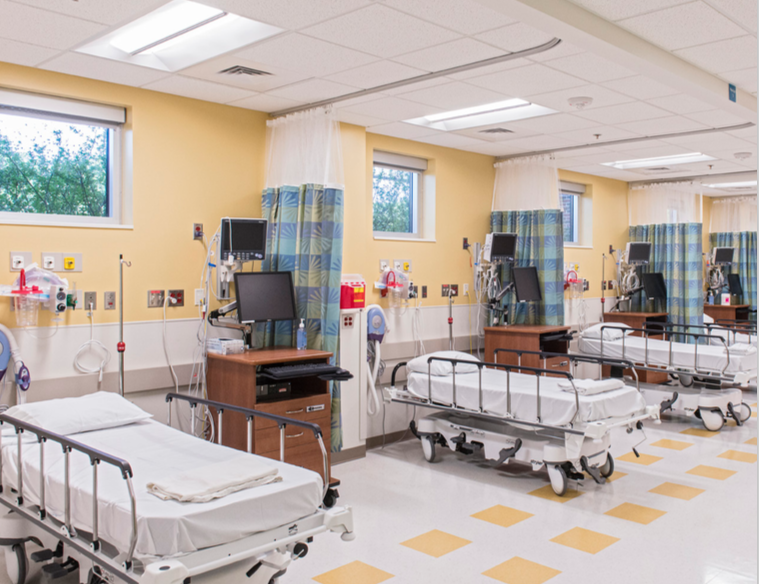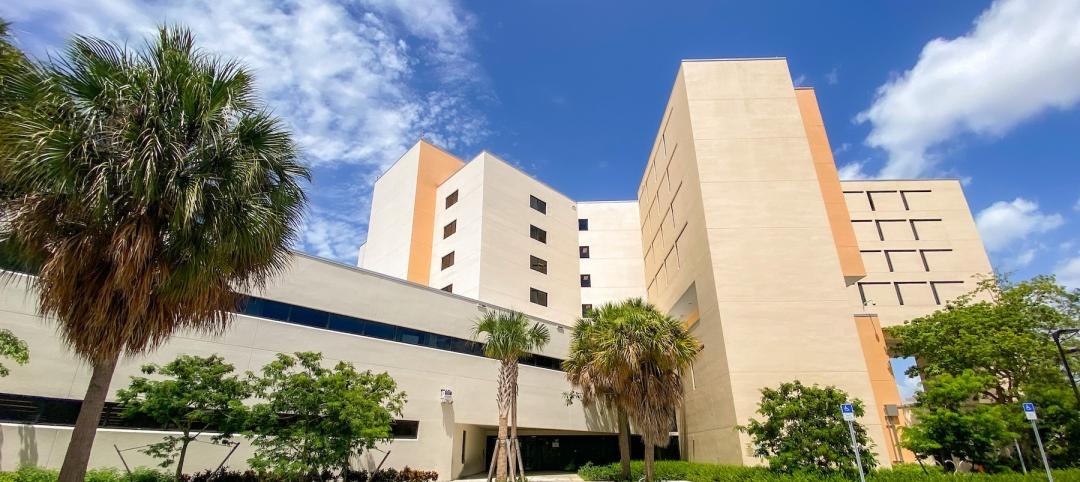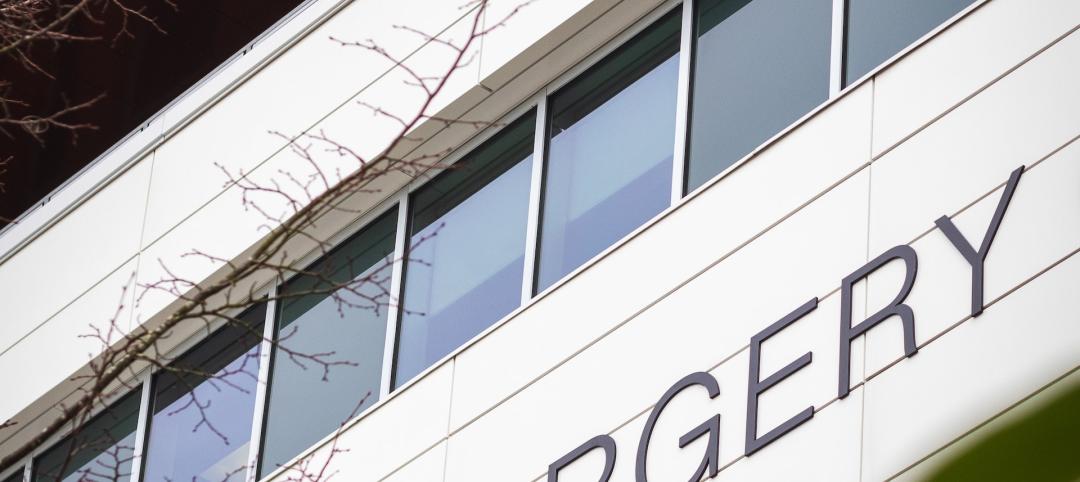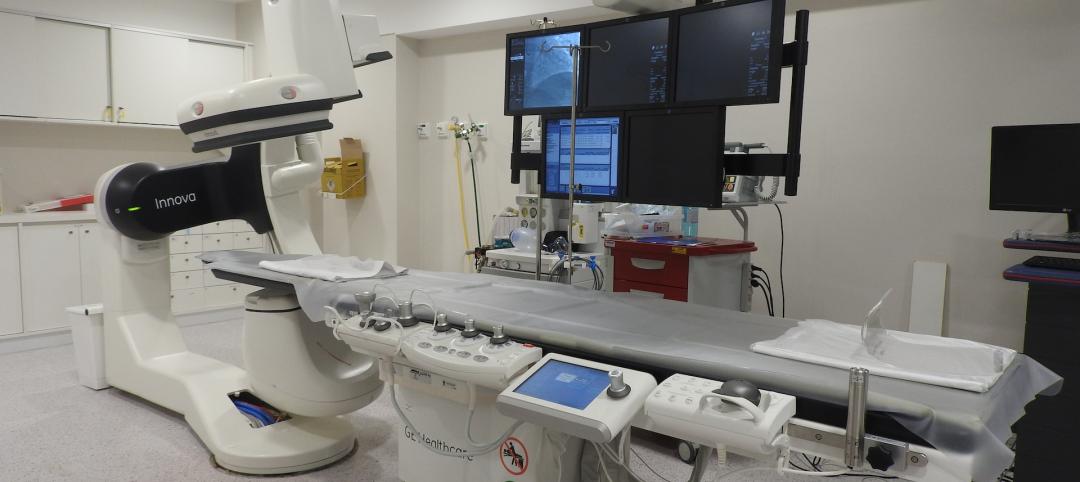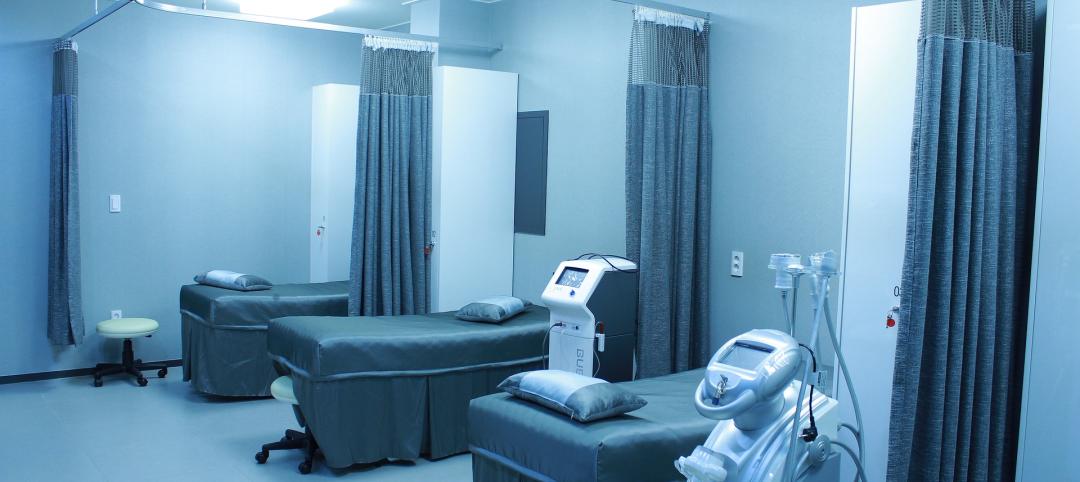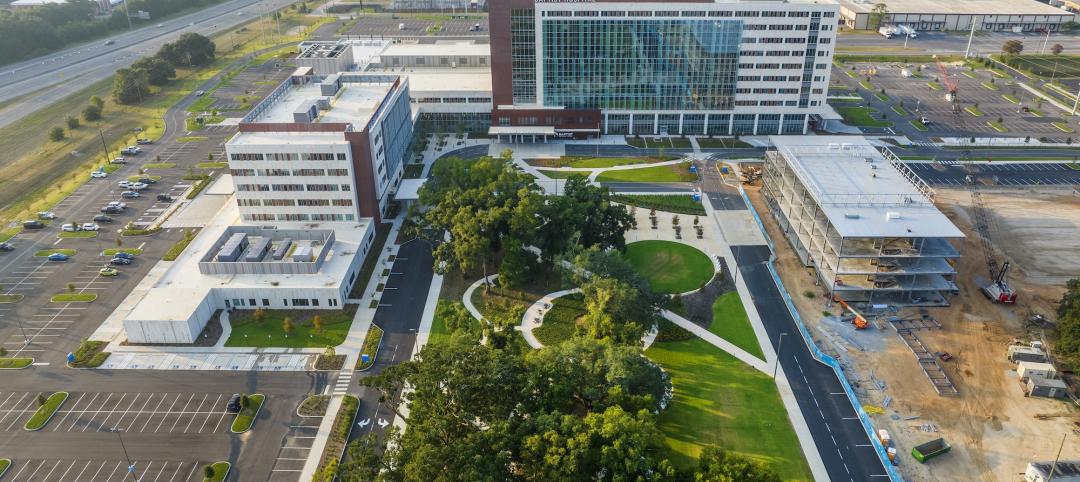Light plays an important role in human health and productivity, and there is no environment where these two factors are more dynamically connected than healthcare facilities. Hospitals are finding that upgrading to a modern LED lighting system can have a significant positive impact on almost every level of hospital function. Although LED lighting usually gets attention as a money-saving, energy-saving strategy—it can reduce lighting energy costs up to 70%—it can also bring measurable improvements to a facility’s performance in terms of patient recovery times, patient experience, medical staff performance, and staff job satisfaction. LED lighting may also contribute to reductions in accidents and errors; an increased sense of security for visitors and staff; and even better cleaning by maintenance staff. Those advantages can, in turn, yield financial benefits that go far beyond the cost of energy.
Today’s healthcare design is driven by several major pressures. Among the changes brought by the Affordable Care Act (ACA) was a link between patient satisfaction and the reimbursement rates that hospitals receive, making patient experience a bottom-line issue. Hospitals are also striving to control their spending through greater efficiency and a drive to get more usage out of limited space.
Surprisingly, better lighting can have impacts in all these areas of concern. Since most hospitals run 24/7, artificial lighting plays a crucial role in day-to-day operations. An LED smart lighting system can provide light that is not only better but also responsive to human needs and behaviors.
One can think of the hospital experience as a series of layers, each experienced by some or all of the stakeholders: patients, caregivers, family members, and non-clinical staff.
A Brighter Welcome
At healthcare facilities, exterior grounds and parking areas are typically what people encounter first. Dark or unevenly lit areas may be dangerous for security and increase the risk of slip/fall accidents. They can make arriving at the hospital stressful—bad for patient health and staff performance and productivity—and deter visitors, potentially impacting patient well-being and experience. Well-lit exteriors increase security, and the sense of security, so good lighting can be a sincere form of welcome.
The same may be said of reception areas, waiting rooms, and the corridors used by visitors and patients. A smart lighting system can adjust illumination levels according to time of day, helping maintain normal day/night body rhythms even in areas that don’t receive any natural light. Good lighting also improves wayfinding, one of the major challenges (and stressors) for hospital visitors and patients.
Light Can Help Healing
Studies over the past two decades have found abundant evidence of the connection between good lighting and patient healing. Other patient benefits may be less obvious. When McLaren Health Care System in Michigan upgraded 11 of its primary hospitals with smart LED lighting systems, they found they could reduce noise levels through control of the lighting. By dimming the lights in patient and visitor areas at certain times in the evening, they signaled that it was time to quiet down and allow patients to rest.
Doctors and nurses may also perform better under better lighting. Studies have shown that dim night-shift conditions make caregiving and medical decision-making more difficult. Since more than half of registered nurses are over the age of 50,[1] when the human eye requires three times as much light as a person aged 25, adequate light is vital for their job performance. Lighting can also affect performance and stress levels in the operating room, and error rates in dispensing medication. At McLaren Port Huron, the hospital’s housekeeping staff reported that with the improved lighting, they could “see what they’re cleaning,” a vital aspect of the fight against in-hospital infections.
Performance Boost
An LED lighting system can even increase usable space. With LED emitters (the “bulb” of an LED fixture) lasting for many years, extra spare bulbs do not have to be stocked to the extent as before, freeing up space for other types of storage. It could also mean drastically reduced maintenance times on fixtures, freeing staff for other tasks.
In healthcare, energy savings is only one of the ROIs of an LED lighting upgrade. Ultimately, the fundamental mission of the enterprise becomes more achievable. Many of the improvements affect bottom-line issues, too, by their impacts on efficiency, patient satisfaction, and job satisfaction.
References
[1] Lighting The Way: A Key To Independence, AARP 2001
Related Stories
Sponsored | BD+C University Course | Jan 17, 2024
Waterproofing deep foundations for new construction
This continuing education course, by Walter P Moore's Amos Chan, P.E., BECxP, CxA+BE, covers design considerations for below-grade waterproofing for new construction, the types of below-grade systems available, and specific concerns associated with waterproofing deep foundations.
Healthcare Facilities | Jan 16, 2024
A new mental health center in Miami offers alternatives to incarceration
The seven-story building has 208 beds.
Giants 400 | Jan 15, 2024
Top 90 Hospital Facility Construction Firms for 2023
Turner Construction, Brasfield & Gorrie, JE Dunn Construction, McCarthy Holdings, and STO Building Group top BD+C's ranking of the nation's largest hospital facility general contractors and construction management (CM) firms for 2023, as reported in the 2023 Giants 400 Report.
Giants 400 | Jan 15, 2024
Top 80 Hospital Facility Engineering Firms for 2023
Jacobs, WSP, BR+A, IMEG, and AECOM head BD+C's ranking of the nation's largest hospital facility engineering and engineering/architecture (EA) firms for 2023, as reported in the 2023 Giants 400 Report.
Giants 400 | Jan 15, 2024
Top 130 Hospital Facility Architecture Firms for 2023
HKS, HDR, Stantec, CannonDesign, and Page Southerland Page top BD+C's ranking of the nation's largest hospital facility architecture and architecture engineering (AE) firms for 2023, as reported in the 2023 Giants 400 Report.
Healthcare Facilities | Jan 7, 2024
Two new projects could be economic catalysts for a central New Jersey city
A Cancer Center and Innovation district are under construction and expected to start opening in 2025 in New Brunswick.
Designers | Jan 3, 2024
Designing better built environments for a neurodiverse world
For most of human history, design has mostly considered “typical users” who are fully able-bodied without clinical or emotional disabilities. The problem with this approach is that it offers a limited perspective on how space can positively or negatively influence someone based on their physical, mental, and sensory abilities.
Healthcare Facilities | Dec 19, 2023
A new hospital in Duluth, Minn., is now the region’s largest healthcare facility
In Duluth, Minn., the new St. Mary’s Medical Center, designed by EwingCole, is now the largest healthcare facility in the region. The hospital consolidates Essentia Health’s healthcare services under one roof. At about 1 million sf spanning two city blocks, St. Mary’s overlooks Lake Superior, providing views on almost every floor of the world’s largest freshwater lake.
Healthcare Facilities | Dec 7, 2023
New $650 million Baptist Health Care complex opens in Pensacola
Baptist Health Care’s new $650 million healthcare complex opened recently in Pensacola, Fla. Featuring a 10-story, 268-bed hospital, the project “represents the single-largest investment in the healthcare history of northwest Florida,” said Gresham Smith project executive Robert “Skip” Yauger, AIA, LEED AP. The 602,000 sf Baptist Hospital is equipped with a Level II trauma center that provides 61 exam rooms and three triage areas.
Engineers | Nov 27, 2023
Kimley-Horn eliminates the guesswork of electric vehicle charger site selection
Private businesses and governments can now choose their new electric vehicle (EV) charger locations with data-driven precision. Kimley-Horn, the national engineering, planning, and design consulting firm, today launched TREDLite EV, a cloud-based tool that helps organizations develop and optimize their EV charger deployment strategies based on the organization’s unique priorities.


